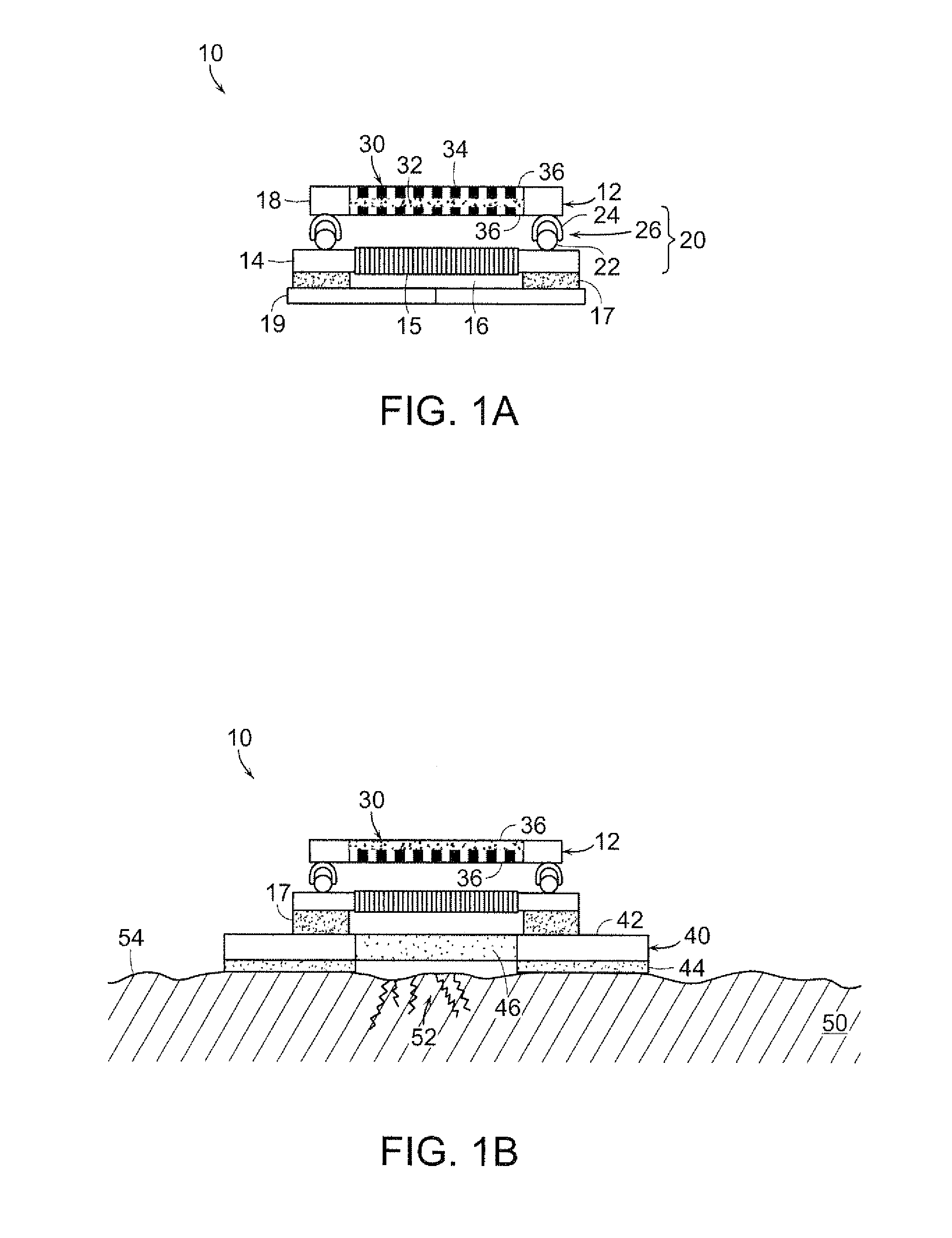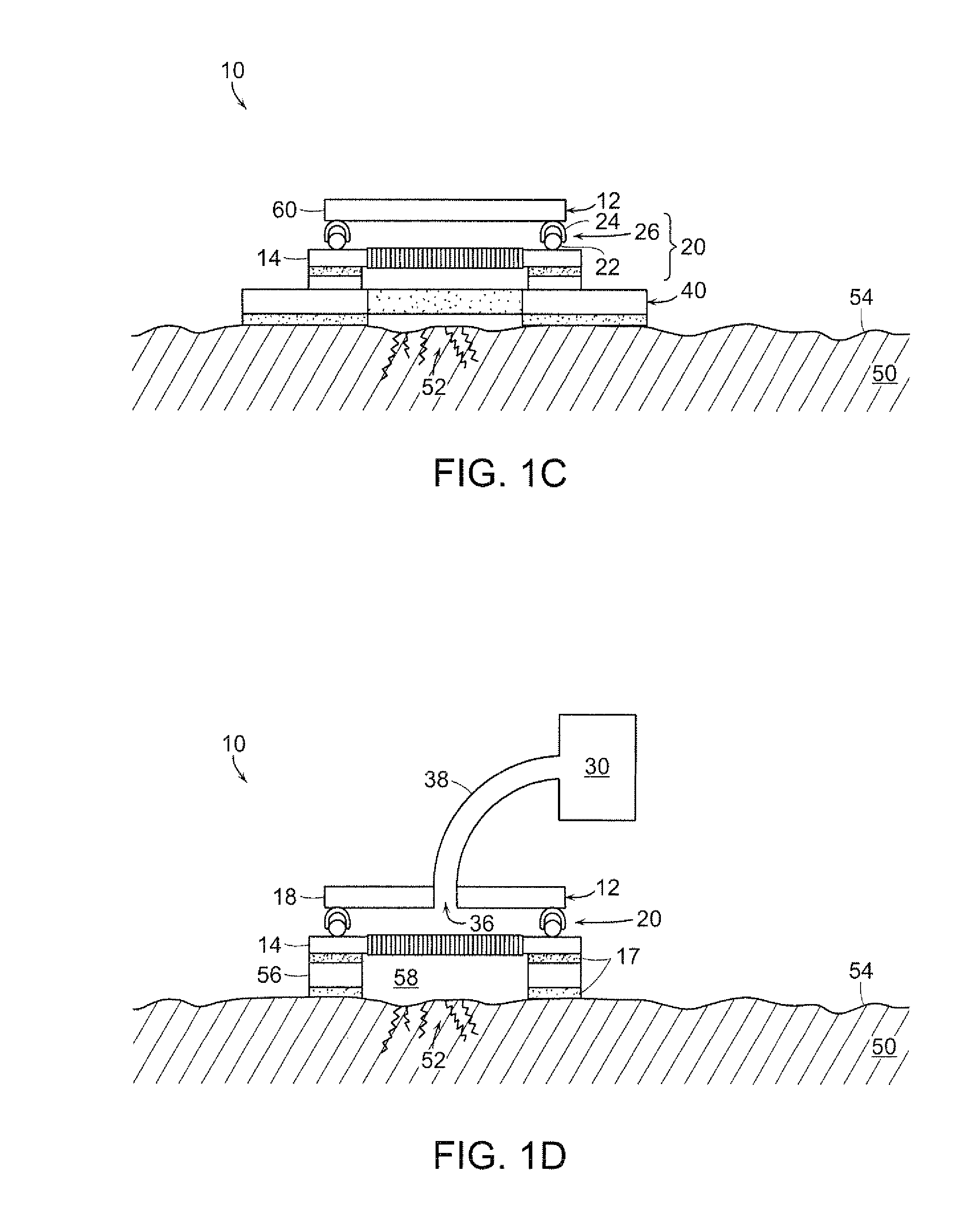Oxygen-Producing Bandage With Releasable Oxygen Source
a technology of oxygen-producing bandages and oxygen-containing oxygen, which is applied in the field of oxygen-producing bandages with releasable oxygen sources, can solve the problems of limiting the patient's mobility, so as to avoid affecting the patient's mobility, easy to change, and easy to repla
- Summary
- Abstract
- Description
- Claims
- Application Information
AI Technical Summary
Benefits of technology
Problems solved by technology
Method used
Image
Examples
Embodiment Construction
[0029]The invention generally is directed to a releasably securable device for delivering oxygen to a wound or injury.
[0030]As used herein, the “terminals” of the power sources or batteries mean the parts or surfaces of the power sources or batteries to which external electric circuits are connected. Also, as used herein, the phrases “electrically connected” or “in electrical communication” or “electrically contacted” mean certain parts are in communication with each other by flow of electrons through conductors, as opposed to electro-chemical communication which involves flow of ions, such as H+, through electrolytes.
[0031]FIG. 1A is a cross-sectional view of one embodiment of a device for delivering oxygen of the invention. Oxygen delivery device 10 includes bandage 12, which includes base 14 defining opening 16. Also included is cover 18 and locking mechanism 20 for releasably securing the cover to the base. Oxygen source 30 is in fluid communication with the cover, whereby oxyge...
PUM
 Login to View More
Login to View More Abstract
Description
Claims
Application Information
 Login to View More
Login to View More - R&D
- Intellectual Property
- Life Sciences
- Materials
- Tech Scout
- Unparalleled Data Quality
- Higher Quality Content
- 60% Fewer Hallucinations
Browse by: Latest US Patents, China's latest patents, Technical Efficacy Thesaurus, Application Domain, Technology Topic, Popular Technical Reports.
© 2025 PatSnap. All rights reserved.Legal|Privacy policy|Modern Slavery Act Transparency Statement|Sitemap|About US| Contact US: help@patsnap.com



